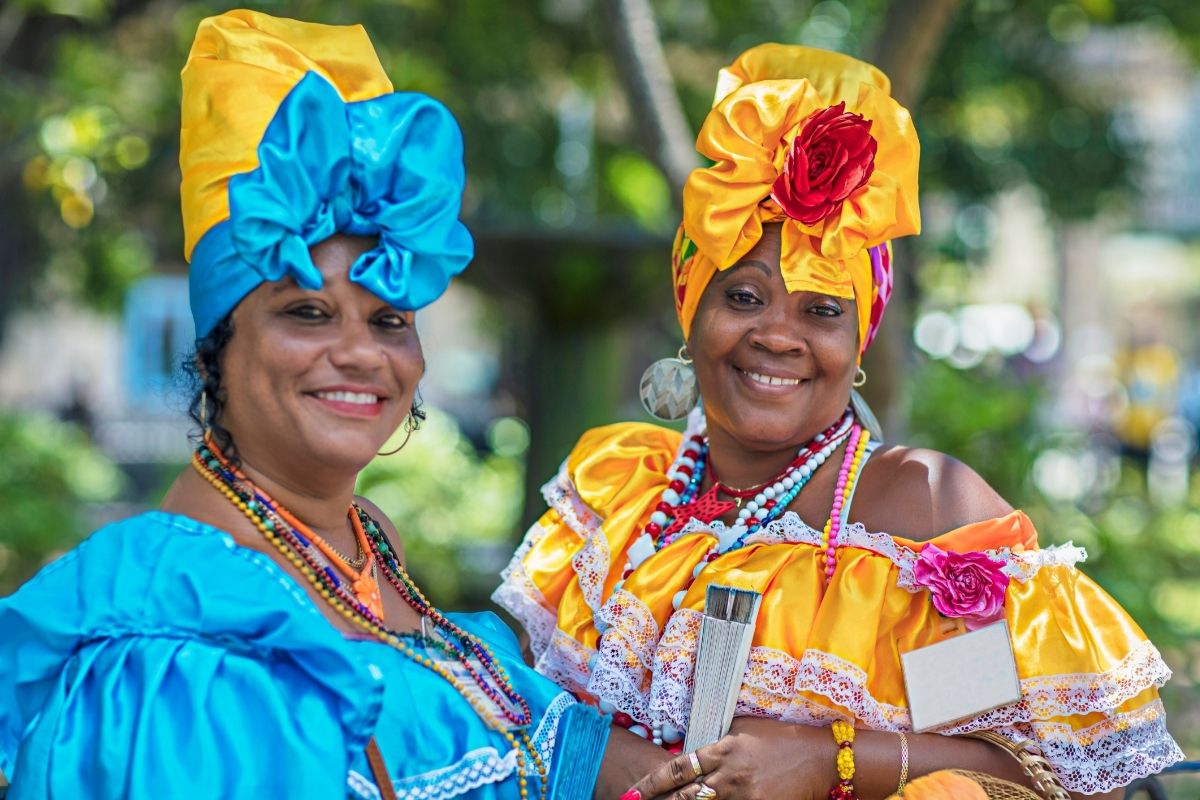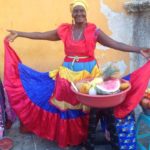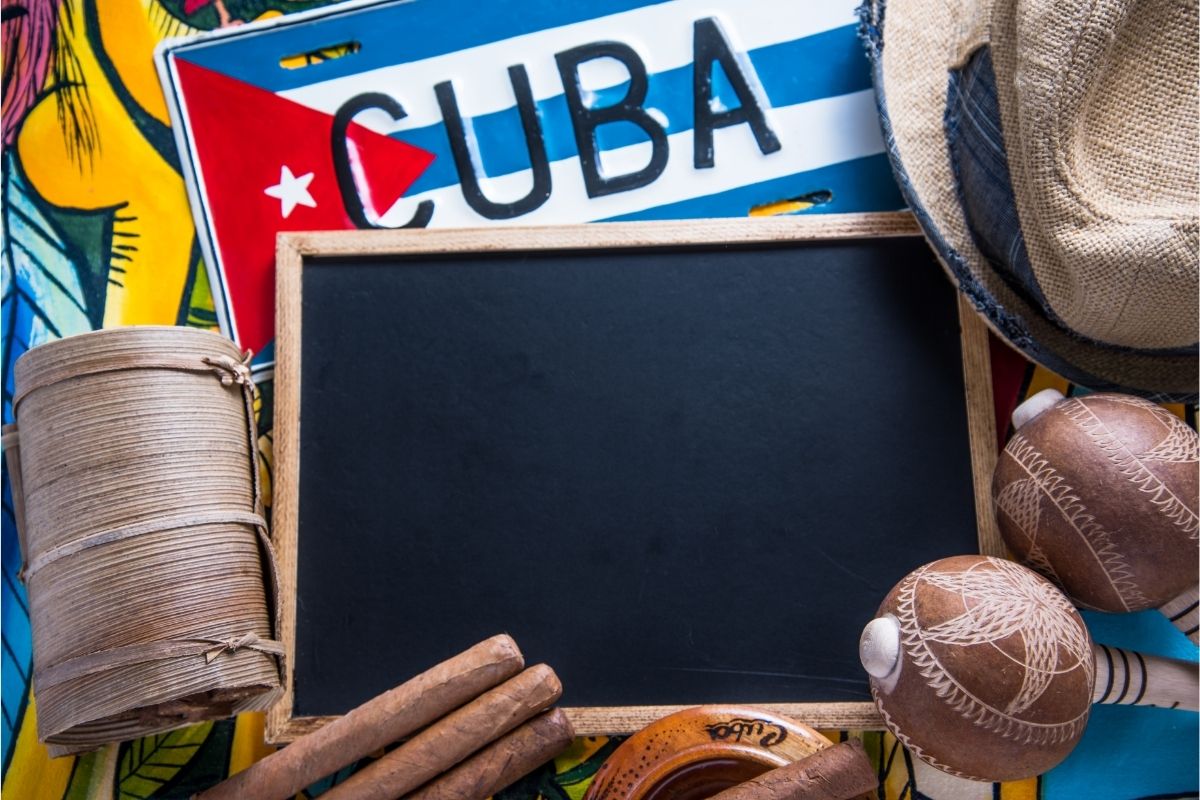Every country in the world has its own proud cultural traditions. Some are said to be as old as time itself, while some are only a few hundred years old.
When it comes to the wonderfully colorful, and often chaotic country of Cuba, there are many interesting traditions.
Cuba is a country that is steeped in culture, heritage, and traditions. But, its recent history has been tumultuous, to say the least.

The 1959 Cuban Revolution saw the country stop in its tracks.
This time resulted in pretty chaotic changes, but one thing remained – Cuba’s rich traditions.
The traditions of Cuba are a combination of Spanish, African, and Caribbean pastimes. This includes the country’s religions, food, music, and dances.
All are an amalgamation of the Old World and the New World.
The result is a country infused with exciting and truly interesting cultural traditions that should be experienced by everyone.
For Americans, knowledge of Cuba and its traditions is often shrouded in mystery. But, we want to change that today.
Read on as we explore some of the most unique and fascinating Cuban traditions.
From smoking cigars to applauding on planes, here’s a list of Cuban cultural traditions to broaden your cultural knowledge of the world.
Cuban Cultural Traditions
New Year’s Eve
We all love to celebrate New Year’s Eve in some way.
Whether that is partying into the early hours with friends or sitting at home for a quiet evening, most of us have our own little traditions every year.
In Cuba, there are various New Year’s Eve traditions.
Some are standard traditions, such as celebrating with friends and family, whereas others are more bizarre.
One tradition is to throw a bucket of water out of your home. This is thought to throw out your bad omens that have built up over the years.
Therefore, you should keep an eye out on where you’re walking on New Year’s Eve in Cuba!
Another tradition involves grapes. To make some wishes, don’t blow out any candles. Instead, Cubans eat 12 grapes at midnight.
This represents the 12 months of the year, with one grape representing one wish.
Burning items is another tradition for NYE in Cuba. This is a symbolic ritual to bid farewell to the old year and to welcome a new one.
This tradition typically includes a whole neighborhood and, in these burning traditions, you will often come across a ‘Mu-econ.’
This is a puppet or doll that is thrown on a bonfire.
Christmas Eve
Okay, Christmas can be considered a tradition in many parts of the world but, when it comes to Cuba, it may get the most attention out of any event during the year.
Known as Noche Buena in Cuba, this tradition sees Cubans eat a large meal consisting of a whole suckling pig, rice, fried plantains, and vegetables.
It’s a time for families to get together, as well as neighbors and co-workers.
Some regions of Cuba have their own little traditions. Take the town of Remedios, for instance.
Here, the locals celebrate Christmas Eve with a fiesta and a parade known as Las Parrandas.
This tradition arose after the legend of a priest wanting to stop people from taking a siesta (nap) after their main, large meal.
This was because they were missing midnight mass.
Therefore, he had the children of the town make as much noise as possible to keep the citizens awake!
Over the last 20 or so years, Christmas traditions have garnered more meaning. This is because of Las Navidades Silenciadas (The Silent Christmases).
This was a period between 1969 and 1998 when the Cuban government banned Christmas.
Since 1998, Christmas has become a significantly important holiday for Cubans.
Calling Your Daughter, Family Members, And Friends ‘Gordita’
If you have ever been to Cuba, and understand some Spanish, you have probably heard the citizens use their own unique terms of endearment towards each other.
When it comes to women, they are often referred to as ‘Gordita’ around friends and family. This translates as ‘fatty.’
Yes, this may seem somewhat unpleasant to English speakers but in Cuba, it is a sign of affection and accepted throughout the country.
Honeymoon Money
To help with honeymoon costs, money is pinned to a bride’s dress.
If you’re invited to a Cuban wedding, you may see male guests dancing with the bride. As they dance, they will pin cash to her wedding dress.
This tradition is to help the bride and groom pay for their honeymoon.
Although it’s not expected of every male guest, it is considered decent to join in.
Very Superstitious
Many countries and regions have unique superstitions. Cuba is no exception.
One popular superstition is to never take seashells home as they can bring bad luck. Another is to never go out in the evening with wet hair.
Why? More bad luck. You should never leave your purse on the floor, either, as this is a sure way of becoming poorer quicker.
It’s not all bad news, though. If you find that your palms are itchy, it is believed that any money problems you may have will soon be solved.
For anyone traveling to and staying in Casas Particulares (private house), you need to be aware of certain traditions.
One is to not allow a rocking chair to swing on its own. This is seen as a symbol of death.
So, if you get up off a rocking chair, ensure it is stationary!
Celebration On A Plane
Many travelers flying to and from Cuba are surprised to hear mass applause when landing in a plane.
If your plane is full of Cubans, you will often experience everyone cheering loudly as soon as the wheels touch down on the runway.
This seemingly spontaneous celebration is a perfect example of the Cuban mindset, showing a positive and happy nature.
Carnival

With such a happy and positive nature, it’s no surprise that the Cubans love to party!
Head to Cuba in the summertime and you may be able to enjoy their biggest public celebration of the year – Carnaval of Santiago de Cuba.
Dating back to the 17th century, this is the most famous celebration in the whole of Cuba.
Santiago is the second-largest city in Cuba after the capital Havana. But, it is certainly the most exotic city, with many cultures settling there.
These include African, Chinese, Spanish, French Haitian, and Indigenous people.
Cigar Smoking
When many people think of Cuba, they automatically conjure up images of Cuban cigars.
But, when it comes to smoking cigars, it’s not as simple as lighting one up and starting to smoke.
There is a ritual when smoking a cigar in Cuba. Cuba is arguably home to the world’s best hand-rolled cigars.
When it comes to smoking one in Cuba, it is something to be enjoyed with friends and even strangers.
Cigars are an important part of social get-togethers.
It is where people sit around tables and discuss the world’s matters, the local weather, and personal situations.
Light up a cigar in Cuba and you may be pushed to dip it in rum.
Need to pass a few hours in Cuba? This is a tradition that is beloved by many.
Baby Names
When it comes to naming a baby in Cuba, you can be as experimental as you want.
Although Maria and Miguel are typically thought to be common Cuban names, things have changed over the last few decades.
Now, parents are encouraged to be unique with their name giving.
This is why many parents combine parts of their own names with relatives to create a unique, new name, never seen or heard of before.
Sometimes, parents may even name their children with their own name but spelled backwards. So, Miguel would become Leugim.
One letter, rarely used in Spanish, is ‘Y.’
However, during the 1970s, the letter became popular and was used to name babies to make them sound more exotic.
The only issue was that a whole generation grew up being unsure how to pronounce their own names.
As we said, experimentation is the name of the game.
Food
Known as the Cuban sandwich, this popular food item was actually invented in Florida, USA.
If you go looking for these in Cuba, you will find them hard to come by. Instead, look for local dishes.
Cubans are renowned for making delicious dishes with very little ingredients.
If it’s Caribbean comfort food you’re after, Cuba will have you covered.
Lechon Asado, a roasted whole suckling pig, is at the top of Cuban cuisine. Eaten all year round, it is especially popular at Christmastime.
The skin is crispy while the meat is tender and smoky. Alongside fried plantains, rice, and back beans, it is a dish that you have to try.
In Summary
Cuba is a colorful and vibrant country soaked in rich traditions.
With many traditions associated with celebrations, there are also superstations to be aware of.
Knowing these traditions will help you if you ever decide to visit this great country.
- What Is The Largest Island In Cuba? - September 19, 2022
- Havana – Why Is It Cuba’s Most Exciting City? - September 19, 2022
- Cheapest Time To Visit Cuba (Ultimate Guide) - September 19, 2022








